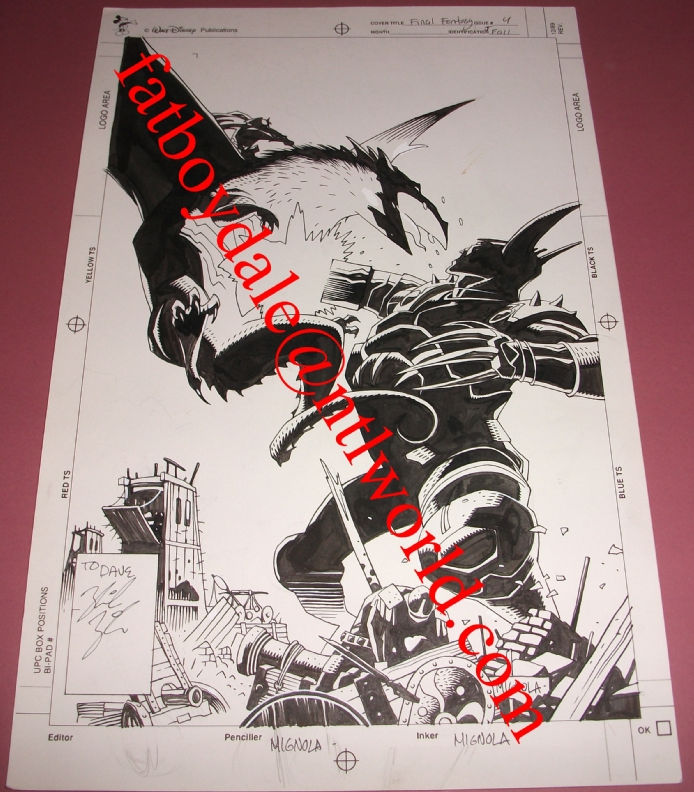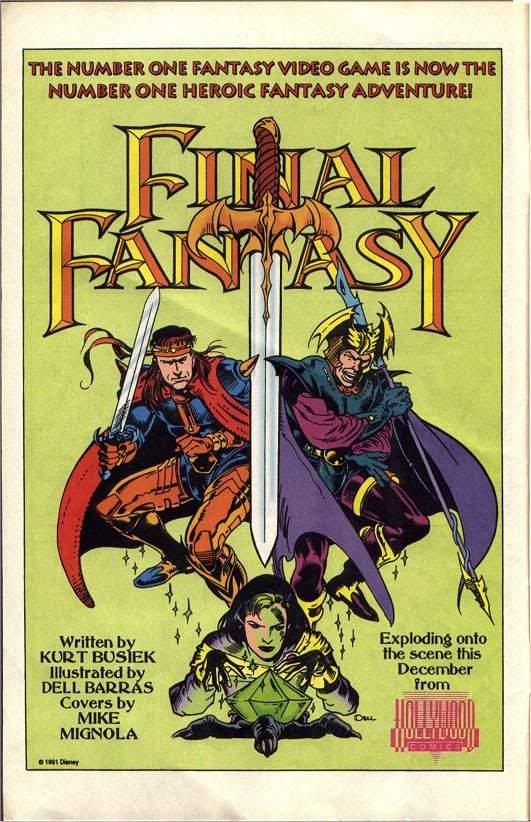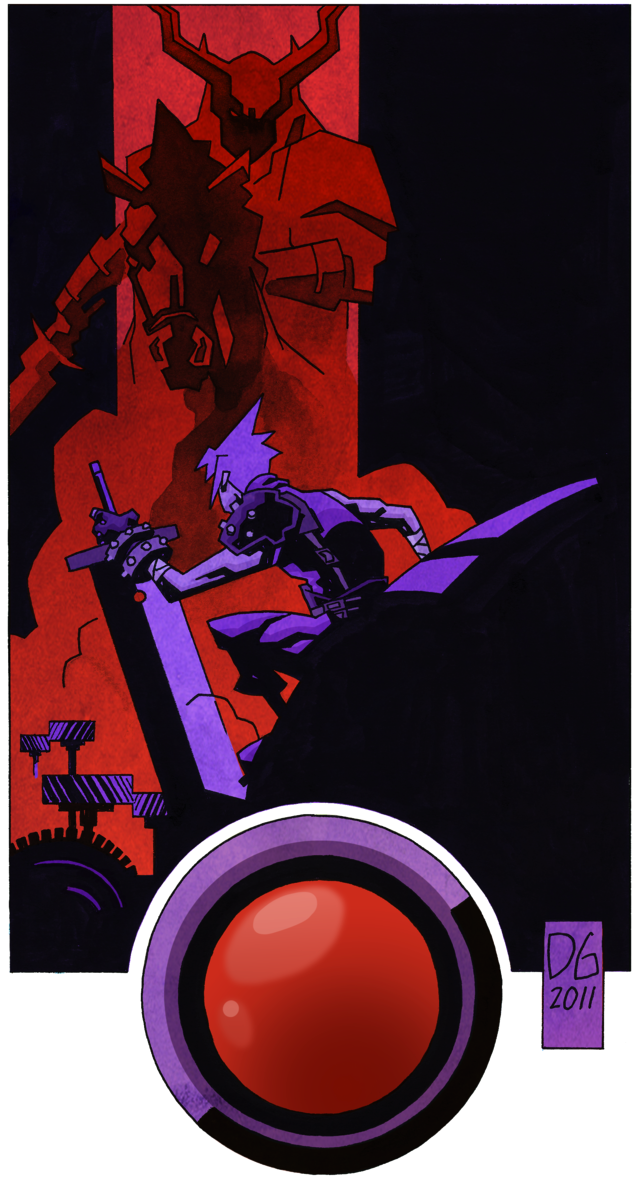A few weeks back, I rented Hellboy: Sword of Storms. It was a neat little movie, and adhered pretty well to the the comics' folklore vibe. The highlight was a sequence adapting Heads.
And it occurred to me, you know, the best Hellboy stories are 8-page adaptations of folk tales, in which Hellboy himself plays only a minor role. Similarly, wouldn't it be great to see some 10-minute Hellboy animated shorts?
It's a real pity that both 8-page comic stories and 10-minute animated shorts have fallen by the wayside. DC, at least, seems interested in bringing them back: they've been doing 8-page "secondary features" in some of their popular titles, and next week's animated Crisis on Two Earths will also include a 10-minute Spectre short. Which is the perfect length for a Spectre story.
And of course all this has me thinking, Why 22 pages? Why 22 minutes? Why 6-issue arcs? Stories should take all the time they need; no more and no less.
Which isn't to say that rigid parameters can't foster creativity. The BioWare Writing Contest I participated in a few years back had some very tight guidelines -- only so many characters, only one location allowed, and that location has to be a pretty tiny square. But in a way, that stimulated creativity. Sometimes, you need parameters.
Douglas Adams is a favorite example. His best Hitchhiker's Guide work was written for radio, with a rigid three-act structure and length requirement for each episode, with the requisite pacing those things entail. Those episodes were adapted as the first two books of the Trilogy. The third, Life, the Universe and Everything, was adapted from an unused Doctor Who pitch, so it was conceived around a predefined structure as well. The last two books, where Adams took a more freestyle approach, tended to flail a bit; they were adapted by Dirk Maggs for radio a few years back and, for my money, worked much better with his judicious editing.
(The awesomeness of The Long Dark Tea-Time of the Soul does not fit my narrative as, to the best of my knowledge, it wasn't adapted from a radio or TV format. The first Dirk book was, though.)
There are plenty of writers who could benefit from tighter restrictions. Will Eisner put as much plot in a 7-page Spirit story as Brian Michael Bendis does in a 132-page Avengers arc. Sometimes I like longer, decompressed stories that spend more time on the scenery and the atmosphere. But there should still be a place for those weird little Hellboy stories.
I recently read Fables: 1001 Nights of Snowfall. Its pacing and form were noticeably different from the typical Fables books, because of its format: it was written as a graphic novel, rather than simply collecting 6 issues of a serial comic.
(A tangent on nomenclature: I absolutely despise the term graphic novel as it is commonly used, ie as a synonym for "comic book" used by people who think they're too cool for Spider-Man. However, it is a useful term when used in its original sense, ie a comic written in long form instead of being serialized in stapled, 22-page, monthly increments.)
Of course, 1001 Nights isn't a graphic novel so much as a graphic short story collection -- far from being a longform Fables story that takes its time, it's a series of stories which are shorter and tighter than a typical issue of Fables. So actually, it's more along the lines of those 8-page Hellboy stories I've been yammering about.
More in the "paced like a novel" vein would be DC's upcoming Earth One books. While it is obvious that these stories need to be published, as nobody has retold Superman's origin story in over three weeks, it's going to be interesting seeing them told with a little more breathing room, without the overwhelming, breakneck pace of Superman: Secret Origin.
I kid, but you know, the nice thing about constantly retelling Superman's origin is that now the Siegel heirs get a cut.
At any rate, once the rehashes are done, it would be quite nice to see DC tell some new stories with these characters in this format -- stories as long or as short as they need to be, at whatever pace suits the piece, without having to speed toward a cliffhanger every 22 pages.
V for Vendetta is actually a decent example -- yes, it was serialized, but its chapters don't fit into a consistent, forced length or pace. And while some of the chapters were climactic action sequences of V stabbing people a lot, others had him simply soliloquizing about anarchy.
(And funnily enough, the guy writing Earth One: Superman is J Michael Straczynski, the same guy whose The Brave and the Bold is currently the best 22-page superhero book that actually tells 22-page stories -- but whose run on Thor was decompressed, organic, and even meandering. Which is not a criticism, as I loved his Thor; it's just a statement that the man can write very well in different formats.)
If the world is a just and beautiful place, Dr. Horrible's Sing-Along Blog is a template for the future of television. It manages the rather neat trick of adhering to a rigid structure that also just happens to be noticeably different from the traditional structure of a TV show: three 13-minute acts, each itself featuring a beginning, a middle, an end, and four songs. It's similar to, but distinct from, the standard three-act structure and 44-minute length of an American TV show.
Even The Daily Show -- God, not a week goes by anymore but one of the interviews goes over. Which is swell, but the way this is handled online is completely boneheaded: if you go to Full Episodes on thedailyshow.com, or view an episode on Hulu, you get the broadcast episode, which shows the truncated interview, followed by an admonition to check out the website, followed by Moment of Zen and credits. I can see this as an unfortunate requirement for broadcast, but guys, Internet videos can be more than 22 minutes. Why in the hell do I have to click through to a different page on the site (or, if I'm watching from Hulu, a different site entirely) to watch the rest of the interview? It's viewer-unfriendly, especially if you use your PC as a media center hooked up to your TV. Cut the full interview into the damn episode. Add an extra commercial in the middle if you have to. (It would be swell if you didn't show the exact same commercial at every single break, but that's a separate presumably-silly-and-useless "rant".)
At least they've wised up a little and started showing just the first part of the interview in the broadcast episode and then showing the rest in the "Full Interview" link on the website. It used to be they'd show a chopped-up version of the interview in the broadcast episode, meaning that instead of the Full Interview link picking up where the show left off, it had five minutes' worth of the same content spread out across it.
You know, it seems like the youngest of the major media is also the one with the least rigid requirements for length. Video games can be anything from a three-second WarioWare microgame to a persistent world that players sink years into. People may grouse a bit that Portal or Arkham Asylum is too short, but it doesn't prevent them from being highly-regarded, bestselling titles.
Which is, of course, not to say that longer games don't have to function under tight restrictions. They're often very high-budget affairs with a hell of a lot of people involved (as Dragon Age tries to forcibly remind you with its absurdly slow credits crawl) -- programmers, writers, artists, and so on. The Mass Effect games have voiced player dialogue and let the player choose Shepard's sex, which means every single one of those lines has to be recorded twice. (And frankly that doesn't seem like enough variety -- I have a Samuel L Jackson lookalike who says "aboot".)
And those restrictions are probably why every dialogue choice in ME is broken up into a predictable paragon/neutral/renegade choice. That kind of very-unsubtle delineation is exactly the sort of thing western RPG developers have been trying to get out of (as in both The Witcher and Dragon Age), but in the context of ME it works quite well -- I've even tried my hand at writing in a three-choices, no-hubs dialogue style and it works very organically. (For the ludicrous amount of dialogue in Dragon Age, there were places I could see the seams showing -- spots where I'd have three dialogue options and, as soon as the NPC spoke, knew that all three led to that exact same response. But that's probably a lot harder to notice if you've never written a dialogue tree yourself, and it's certainly an artform in and of itself, giving a response that works equally well for three different questions. I can only think of one occasion in the dozens of hours of Dragon Age where a writer screwed up and had a question hub that began with an NPC answering a specific question in a way that didn't make any sense if the dialogue looped back.)
And of course it's the medium that allows this kind of longform storytelling. Game length is no longer restricted by the arcade environment. Which is, of course, not to say that short-play games don't get made anymore -- Street Fighter 4 is a high-budget, "hardcore gamer" example, but Nintendo's entire business is built around games a casual player can pick up and play for ten minutes at a time. Ditto every Flash game on the Web, and most games on the iPhone.
And, indeed, Internet delivery is going to liberate other media from their restrictions. Eventually, we're bound to see shows like The Daily Show just run more than 22 minutes if they have to, and, God willing, we'll see more offbeat stuff like Dr. Horrible. The Web's given us comics as diverse as Achewood, Dr. McNinja, Templar, Arizona, and FreakAngels, and cartoons from Adventure Time to Homestar Runner to Charlie the Unicorn to Gotham Girls to the complete version of Turtles Forever. It's also allowed MST3K to continue in the form of the downloadable RiffTrax and the direct-order Cinematic Titanic.
Variety is the spice of life. I love comics -- and yeah, that includes mainstream superhero comics. But I'm sick of all of them having the exact same structure. Fortunately, I think we're on the edge of an age of experimentation.
Or another damn market crash. It is an odd-numbered decade now, after all.



